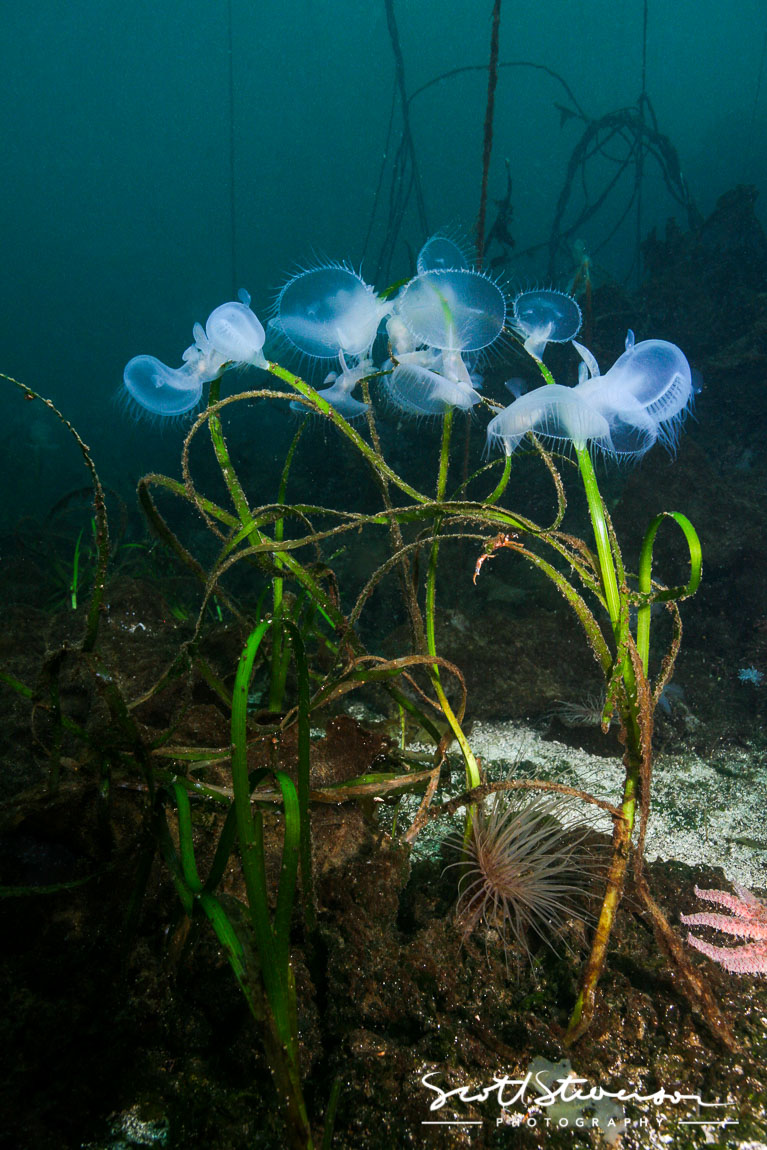Under the hood - The strange and unusual Hooded Nudibranch
Gardens were part of my life growing up. Mostly vegetable but rock and flowers gardens as well. I was was very fortunate to always have fresh veggies and fruit year round and our yard was always in full bloom in the spring and summer.
However having gardens aways attracted all sorts of different animals into our yard, everything from deer and birds to moles and slugs. Land slugs on Vancouver Island are quite different from the colourful wondrous slugs that live beneath the waves around the island and inhabit the oceans of the world. Ocean gardens are a bit different than ones on land.

There are more than two hundred different species of sea slugs or nudibranchs that live in the Pacific Northwest. Some brightly coloured covered in fleshy thorns and others basically translucent resembling something from the era of the dinosaurs.
One of these crazy creatures is the Hooded Nudibranch (Melibe leonine) is easily recognizable by its uniquely large, tentacle-fringed oral hood, translucent body and pairs of paddle or flipper-like appendages (respiratory appendages called cerata) that line its body behind the hood, reminiscent of a stegosaurus.

Found on rocks, eelgrass and kelp in the low intertidal and sub-tidal areas, to 37 m deep. Large aggregations of this species on kelp and eelgrass are not uncommon at warmer times of the year. The Hooded Nudibranch's range extends along the Pacific coast from Alaska south to California.

If dislodged or disturbed by a predator, this species may also be seen "swimming" in the water column its body back and forth towards a new location giving this little creature a similar appearance to a jellyfish.
This nudibranch uses its flexible and hood to capture prey, such as zooplankton, jellyfish, and even small fish. Once trapped in the hood, the two sides of the hood sweep together, the tentacles hold the prey in, and the hood contracts to force the food towards the nudibranch's mouth.

The Hooded Nudibranch produces secretions, which have a sweet smell. Often, equated to the smell of watermelons, citrus or even candy. While most predators avoid this nudibranch based on its secretions, the kelp crab (Pugettia productus) is a rare exception. These crab love to feed on these sweet little treats.

While this hooded nudibranch is the only Melibein the Pacific Northwest, worldwide the genus is composed of more than a dozen accepted species.

Additional images - http://www.scottstevensonphotography.ca/
Thanks.
I would love to do photography in the ocean. That would be a dream come true! Great pics and very interesting animals. I wonder how these sea slug treats would taste like for us humans lol
Wow wonderful plants :O
Hey i've write about mums can you read it , and give me vote if you like it
Support me
https://steemit.com/love/@mokh-tar/dear-mum-spoken-word
Wow stunning pic and fab blog thanks for sharing love kirsty xx 👌👌👌👌👌👌
Real underwater gardens, for connoisseurs!
Gorgeous shots, congratulations on the prospects and the message captured on the photo!
Lovely post thanks for sharing @scottdphoto very educational and glorious photographs 👍
It is so beautiful -
Wow, so beautiful! You have capture them really good :)
Is it called garden when it is under water?
Nice pics tho :)
Stunning photos and review! I really liked your post!